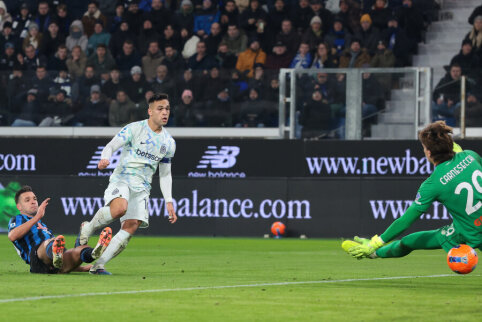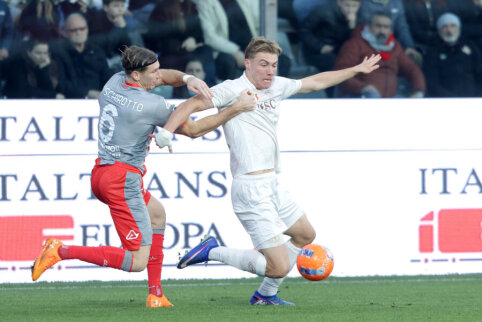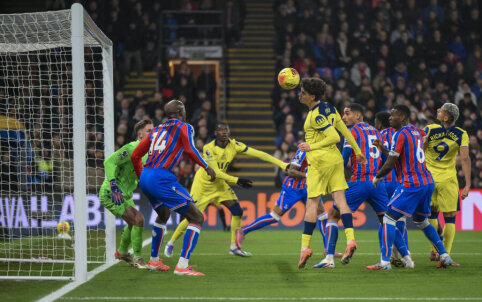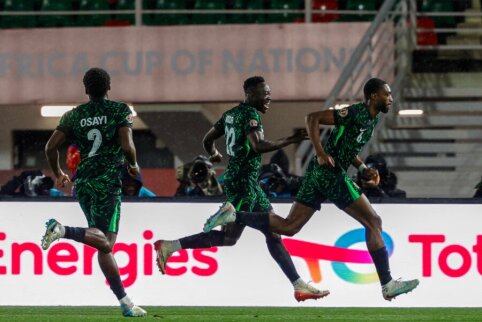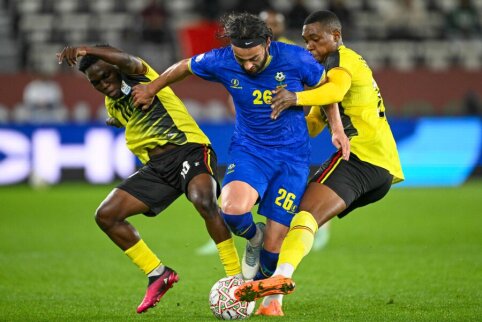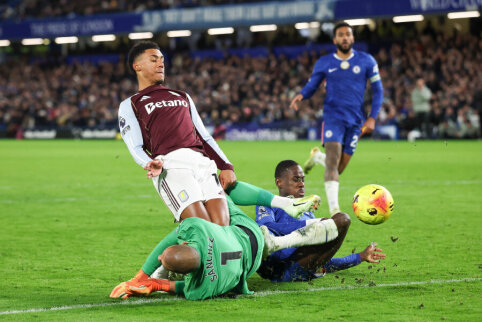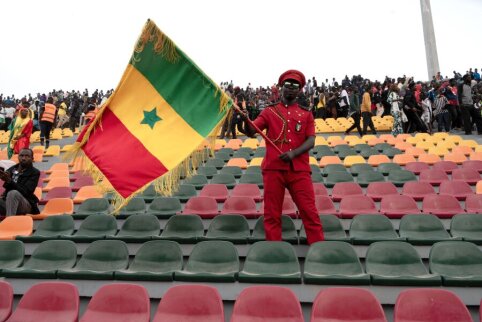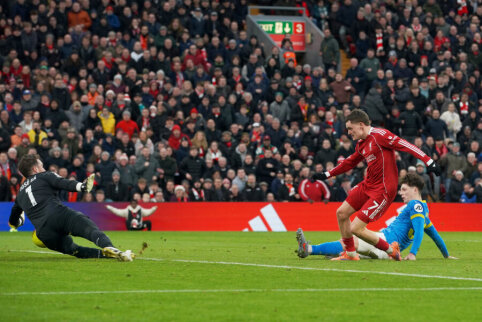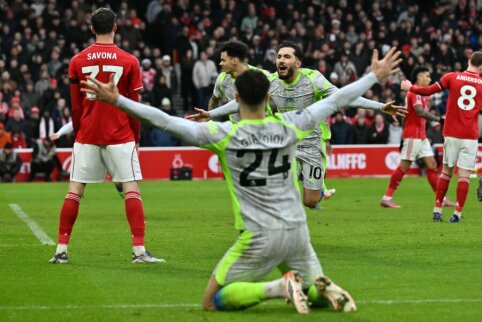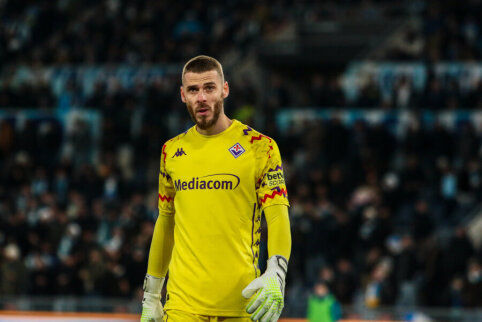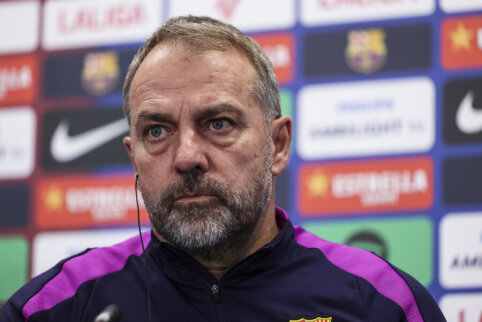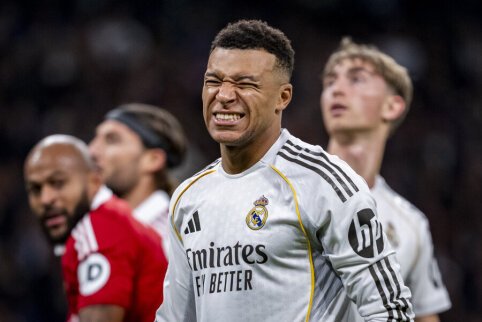 © EuroFootball.com
© EuroFootball.com
Offside rule in football is probably one of the most important rules used to give an advantage to the defending team. However, there are times when no offside is recorded in a match, but there are also times when not just one but even two offsides occur during a match. There are football players who constantly get caught in offside positions. In recent years, AC Milan forward Filippo Inzaghi has become famous for that. Some of us still might not be able to accurately say when an offside was, and when it wasn't. Most people think it's very simple to do. Let's analyze what football rules tell us about it.
Rules
So the first thing everyone should know is: "If a player is in an offside position, it does not mean he has violated the rules." It is clear and understandable: offside is not always recorded. A player is offside if: "he is closer to the opponent's goal line than the ball and the second-to-last opponent." If the goalkeeper runs out to catch an equalizer and the opponent's forward receives a pass after taking possession of the ball, but there is no one in front of him or only one defender, that is also offside. However, this is a very rare situation - in modern professional football, it almost doesn't happen. This rule also states that offside can only be called during a forward movement because if the ball is in front of the player, he will never be ahead of the goal line. In many situations, the forward with the so-called "last defender" is in the same line, and sometimes the offside is called, sometimes not. When should it at least theoretically be? When the attacking player is at least slightly ahead of the defender with any part of his body that allows him to play. So if the attacking player's hand is extended beyond the defender, it is not offside, because he cannot play with his hands. The rest of the body theoretically must be further away from the goal than the defender. Considering that assistant referees, who flag offside, can be over 30 meters away from the situation, these theoretical requirements are usually not taken into account because it is incredibly difficult to see them, even during a replay. A very common situation, countless examples, remember the last match of your favorite team and that episode where they called the assistant referee an "idiot" for not being able to flag offside.
Assistant Referees
Football fields are often maintained in such a way that the lines of grass (lighter and darker grass) are always parallel to the goal line. This especially facilitates the work of assistant referees in offside situations. It should be noted that the midline in this rule also serves certain functions. It divides the field into two equal parts, and offside is not called on the defensive side of the field.
When Offside is Called and Doubtful Situations
A player in an offside position is penalized only if "in the opinion of the referee, their participation influences the course of play, the actions of opponents, or their offside position gives him an advantage over the opponent". FIFA constantly organizes various seminars to train referees to properly assess the offside and to officiate matches according to official rules, not their opinion. A common situation: a long-range shot towards the goal, three attacking players are in offside. Watching through the TV, you can clearly see if they are hampering the goalkeeper or not. The assistant referee, looking at the field from the side, sees the situation slightly differently. He sees the situation more poorly than we do at the screens. It is difficult for him to decide in a few seconds whether those players are blocking the goalkeeper or not. This is where the opinion rule of the referee comes into effect. Sometimes when watching replays, we see that the opinion was wrong. Examples can be given in millions. Bending team tries to create a fake offside situation during a penalty kick.
When Offside is Not Called
Offside should never be called if "a player receives possession of the ball after it has been played to him by a teammate, after it rebounds off a goalpost or crossbar, or after a ball has been deliberately played by an opponent. After an offside is called, the referee must award an indirect free kick for the opposition team, where a player of the opposing team shoots from the place where the offside rule was violated."
Fake Offside and its Nuances
Fake offside is one of the defensive tactics (all defenders in one line quickly run forward before a pass is made, leaving the forward in the offside position), but when using this tactic, defenders must be very good at playing together and maintain discipline, because if the fake offside fails, it usually poses a serious danger to the defending team. In the final of the 1996 Atlanta Olympic Games, Argentine football players tried to perform this maneuver, but even three Nigerian football players ended up alone in front of the goalkeeper. The opportunity was seized, a goal was scored. This happened during extra time. The game ended with a score of 3-2 in favor of the African team. The Argentinians had to settle for silver medals.
Standard Situations and their Execution Rules
Penalty Kick
When taking a penalty kick or a free kick, the ball must be completely stationary, and the player taking the shot must not touch it again until another player has touched the ball. If the ball goes directly into the opposing team's goal when taking a penalty kick, such a goal is, of course, counted. Everyone admires fantastic penalty kicks from Ronaldinho, Beckham, and other footballers. Some of them run towards the goal from a penalty or a free-kick, others not, but regardless of whether they touched another player or not, they are all counted. However, theoretically, it is possible to score an own goal when taking a penalty kick. In this case, the attacking team is protected from such tricks. According to football rules, opponents have the right to get a corner kick at most.
Free Kick
First of all, attention should be paid to the referee when he awards a free kick. The referee signals that he is giving a free kick by raising his hand above his head. He keeps his hand raised until the player takes the shot, and the ball must touch another player or the game stops. The goal is counted only if the ball touches another player after crossing the goal line before hitting the goal line. Otherwise, if the ball does not touch any player on the field and ends up in the defending team's goal, a free kick is awarded from their goal. The situation is similar to when taking a penalty kick - it is possible to score an own goal. The opponents get the right to take a corner kick. Penalty and free kicks are taken from the places where the rules were violated. Exceptions: • a penalty or free kick awarded in the defending team's goal area is taken from anywhere on the field. • a free kick in the goal area is taken from the goal area line, which is parallel to the goal line and closest to the spot where the offense was committed.
Both penalty and free kicks can be repeated if the referee demands it due to any circumstances. The shot must be repeated if the attacking team fails to cross the goal area line while taking a penalty or free kick from their own penalty area.
Penalty Kick from 11 Meters
For those who used to take penalties from 11 meters in their youth and liked to perform various tricks, football rules strictly define how this shot should be taken. It must always be clear which player will take the shot from the 11-meter penalty spot. The goalkeeper must stand on their goal line between the goalposts, facing the player taking the shot until they take it. Players, except the shooter, must be outside the field, beyond the penalty area line, and not closer than 9.15 m from the 11-meter mark. The referee cannot signal to take the 11-meter penalty until the players have taken positions as specified in these rules. The player taking the shot can only shoot forward, must not touch the ball a second time until another player touches it.
Goal Kick
A goal kick is a way to restart the game. A goal scored from a goal kick is counted if it is scored in the opposing team's goal. A very rare situation in modern football, but in case of such a situation, the referee would likely make a mistake and award a free kick from their goal. Also, the referee's requirement to take the kick from the side where the ball went out behind the goal line is not justified. A free kick can be taken from any place on the goalkeeper's area. During this kick, the opposing team's players must be beyond the penalty area line until the game restarts, that is until the ball crosses the penalty area line. If the player taking the shot does not meet these conditions, the kick is repeated.
Did you know that... • A goal kick at the beginning of the match is called the "initial kick" and has its own execution rules. • When the ball rebounds into the field from a corner flag, the game continues. • The width of the goal line must not exceed 12 centimeters. • The corner flag must not be shorter than 1.5 meters. • The "9 meters" is actually 9.144 meters (exactly 10 yards). • The maximum size of the field according to FIFA standards is 120x90 meters (for non-international matches), and for international matches - 110x75 meters. • The minimum size of the field according to FIFA standards is 90x45 meters (for non-international matches), and for international matches, 100x64 meters.
